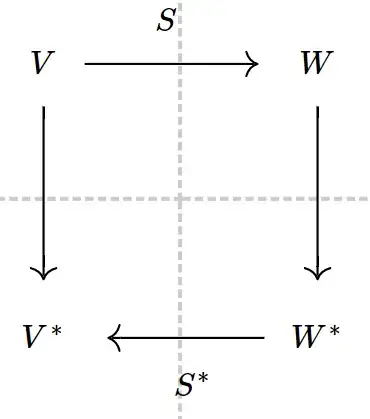Yes, it is fairly surprising that no broad version of such a family of diagrams can commute.
Even if we restrict out attention to finite-dimensional Hilbert spaces over $\mathbb R$, and use the Riesz-Fischer isomorphism of $V$ to $V^*$, the analogous diagram does not commute unless $S$ is an isometry to its image. This is already clear with two-dimensional real Hilbert spaces.
For emphasis: it did surprise me considerably some years ago when I came to understand that the Riesz-Fischer isomorphism is generally "not functorial" ... in the sense that the expected diagram fails to commute. For me, this arose in looking at things like $H^1\to L^2\to H^{-1}$ where $H^i$ are Sobolev spaces, and $H^{-1}$ is dual to $H^1$... Details about this would probably be too tangential to the basic question here.
